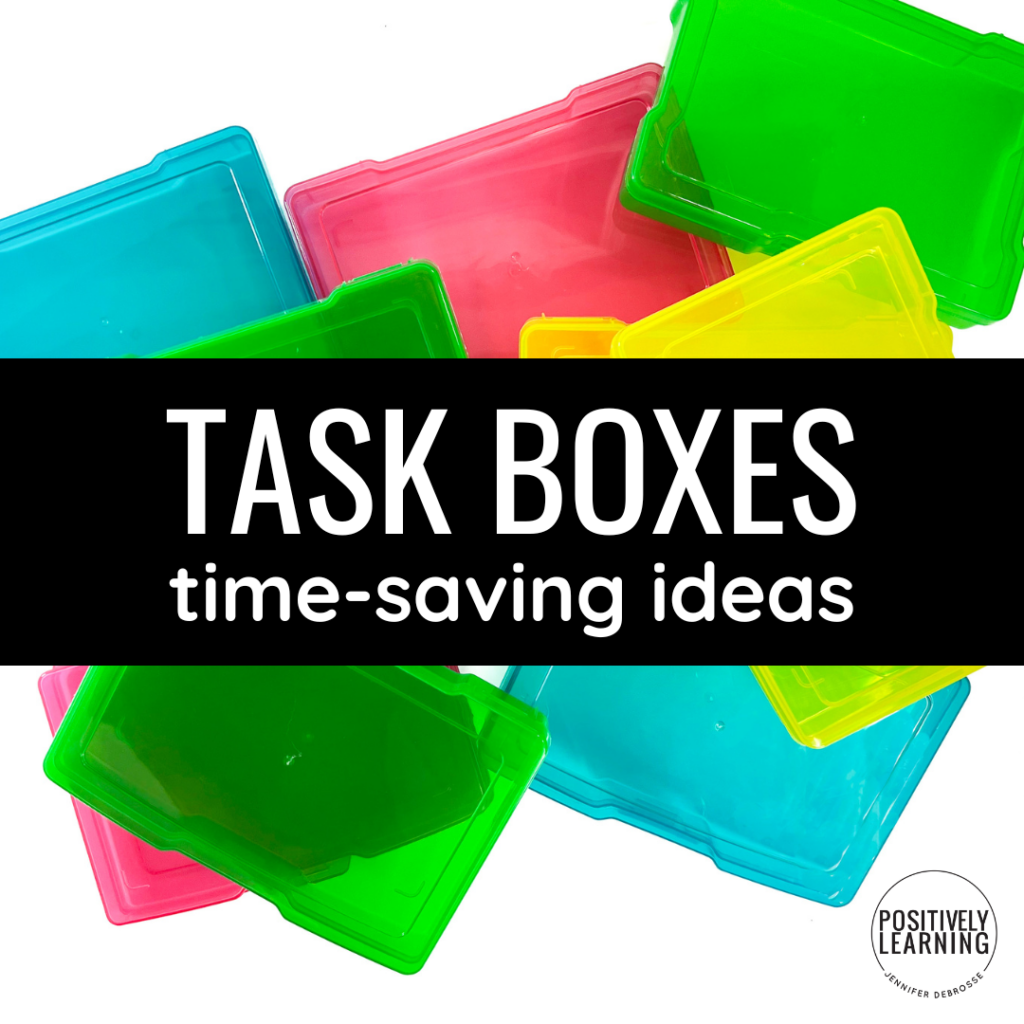
Hey there, dedicated educators! Task boxes have become a buzz word lately, and if you've ever wondered how to incorporate them or simply enhance their usage, you've landed in the right place. This blogpost serves as the ultimate guide to getting the most out of using task boxes with your students. Even better? There's time-saving tips for YOU!

Table of Contents
ToggleIn a nutshell, task boxes are self-contained, independent work tasks that cater to a wide range of skills and grade levels. From enhancing fine motor skills to teaching literacy, math, and social skills, these tasks a high on engagement.
While task boxes contain the materials needed for a particular task, task cards are visual supports or instructions guiding the student. Think of the card as a visual guide and the box as the full sensory experience.
They are EASY to set-up, yet flexible enough to personalize. They’re the perfect way for visual learners, all ages from early elementary to young adult, or those with a language delay to practice and reinforce skills.
But don't stop at using task boxes for only independent work… that's just the beginning! Student task boxes can be incorporated into ALL areas of learning:
The Task Box Dollar Club (monthly task box bundle) will build your student resource library quickly OR check out Task Box Lesson Plans (click here to download the preview in Positively Learning's Teachers Pay Teachers TPT store):
Consider adding hands-on math and literacy manipulatives or sensory bin items, like pom poms and stringing beads, to differentiate the tasks and add a fine motor component.
Break the school day into time blocks or time periods. Use task boxes during these intervals, perhaps alternating between important tasks and more sensory or fun fine motor activities (which are also important!).
The good news? They can be tweaked in different ways from the type of task to errorless learning. Whether it's an independent work task for a student who needs to focus alone or a task card set for group work in small groups, the flexibility is built in. The Task Box Lesson Plans feature forty high quality small group lesson plans that are done for you OR you can edit them to align with your students' IEP goals and objectives or early intervention needs.
A common problem with traditional classroom centers might be students feeling overwhelmed with too many directions or skills that seem complex. The easy solution? Differentiated task boxes that include visual supports in bite-size increments. Introduce the task during guided practice and then gradually release when students are ready to begin working in students pairs or independently.
Remember, there’s no “one-size-fits-all.” The great thing about using task boxes is their adaptability. If you're ready to save time and incorporate task boxes into your small group instruction, check out the time-saving curriculum:

I’m Jennifer and I was a special educator in the elementary school setting over the past decade. I entered the classroom every day dedicated to making learning inclusive AND engaging.









This website uses cookies to ensure you get the best experience on our website. See full disclosure here.
This website uses cookies to ensure you get the best experience on our website.
See full disclosure here.